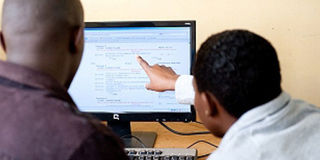Technology easing humanitarian work

Migration is now a household issue. Nowadays, we read and watch developments about refugees, internally displaced people and migrants than we did 20 years ago. Many of us are getting desperate in the search for a lasting solution to problem. Ultimately, we have to find a solution to the causes of displacement of people. As part of the solution to the displacement problem, we should be grateful that technology has come into play and it is offering some solutions to migration and displacement.
Technology in humanitarian assistance has become a major success story in the last five years. Humanitarian aid agencies and civil society are having their work eased due to technology. We can now see application of remotely piloted aircraft systems in mapping out displaced populations. It also helps in humanitarian aid delivery. This is helping to solve the confusion caused by refugee numbers.
Governments have been grappling with how to determine the number of refugees in the country. This issue is becoming problematic in regard to the amount of food aid that should be dispatched to a settlement camp.
However, it is now possible to digitally provide refugee identities. They can make use of an app to support the distribution of humanitarian services such as food aid and non-food items. Technology has improved transparency and accountability in services provision.
Mobile phone apps have been developed to help in fund transfers and in translation, where language is a major obstacle to communication.
Refugees and immigrants can now access this technology through social media. They can easily trace their separated family members. Migrants can now relay updates of their whereabouts to loved ones at different stages of their journey after fleeing home. Even when in displacement camps, the youth are more receptive when mobilised through social media than through traditional means. It is now easier to call them up to attend to anti-HIV/Aids campaigns.
However, the big undoing of technology in humanitarian assistance is that the information being shared can be accessed by bad people. We have seen it being used to aid smuggling and trafficking of migrant kids and other persons.
That is why it is important to be conscious about the extent to which technology can be used so that we learn to be able to keep its good aspects, which include enhancing the benefits as well as mitigating the risks that come with it.
Possibly, there is need to enact laws that ensure that technology is used beneficially and responsibly. Society ought to apply the good aspects of technology.
Simon J. Mone,
[email protected]




